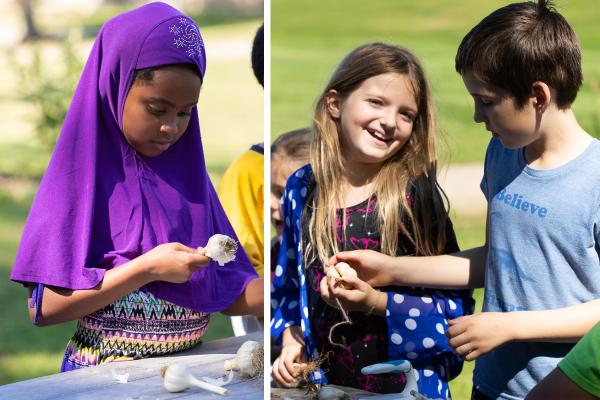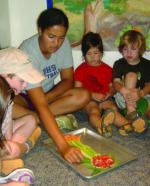In the state of Vermont, more than 100 farms provide food to feed youth via school nutrition and early childhood programs – you may see many of those farms proudly displaying signs this month that read, “This Farm Feeds Vermont Kids.”
There are so many ways you and your students can join in enjoying local foods this month–and all year long! Here’s one activity to introduce early learners to the plants we eat.
Fall Activity: Plant Parts We Eat
We believe early childhood education is the ideal place to begin creating a culture of sustainability. Designed for early learners, this activity nurtures interest and curiosity about where food comes from, and encourages tasting different foods.View the activity as a printable PDF.
Directions:
For this experience, you'll need the book Tops and Bottoms by Janet Stevens; carrots, celery, broccoli, lettuce, and cherry tomatoes (from a garden, local farm, or a store); a cookie tray; and a cutting board and knife.
- Offer freshly harvested or store-bought vegetables to the children as you read Tops and Bottoms by Janet Stevens.
- Discuss what parts of the plants we eat when munching on carrots (root), lettuce (leaf), broccoli (flower), and tomatoes (fruit).
- On a large cookie sheet, let children shape a plant with the harvested vegetables. Cut the carrots into thin sticks for the “roots,” add celery sticks for the stem, lettuce as the leaves, and broccoli pieces as the flower. Cherry tomatoes are the fruit to eat. Afterwards, eat all the parts of that plant!
- Process and reflect on the experience with the children by engaging in a conversation guided by these discussion questions:
- Where does food come from?
- What is your favorite vegetable?
- What part of the plant is your favorite vegetable?
- Can you think of any other roots/leaves/stems/seeds/fruits that we eat?
This activity is from Cultivating Joy and Wonder, a collection of teaching ideas exploring Education for Sustainability in early childhood through nature, food, and community. Download a copy of the entire book.
Visit Vermont FEED for more resources and information on incorporating farm to school at any grade level. Vermont FEED is a farm to school partnership project of NOFA-VT and the Shelburne Farms Institute for Sustainable Schools.


